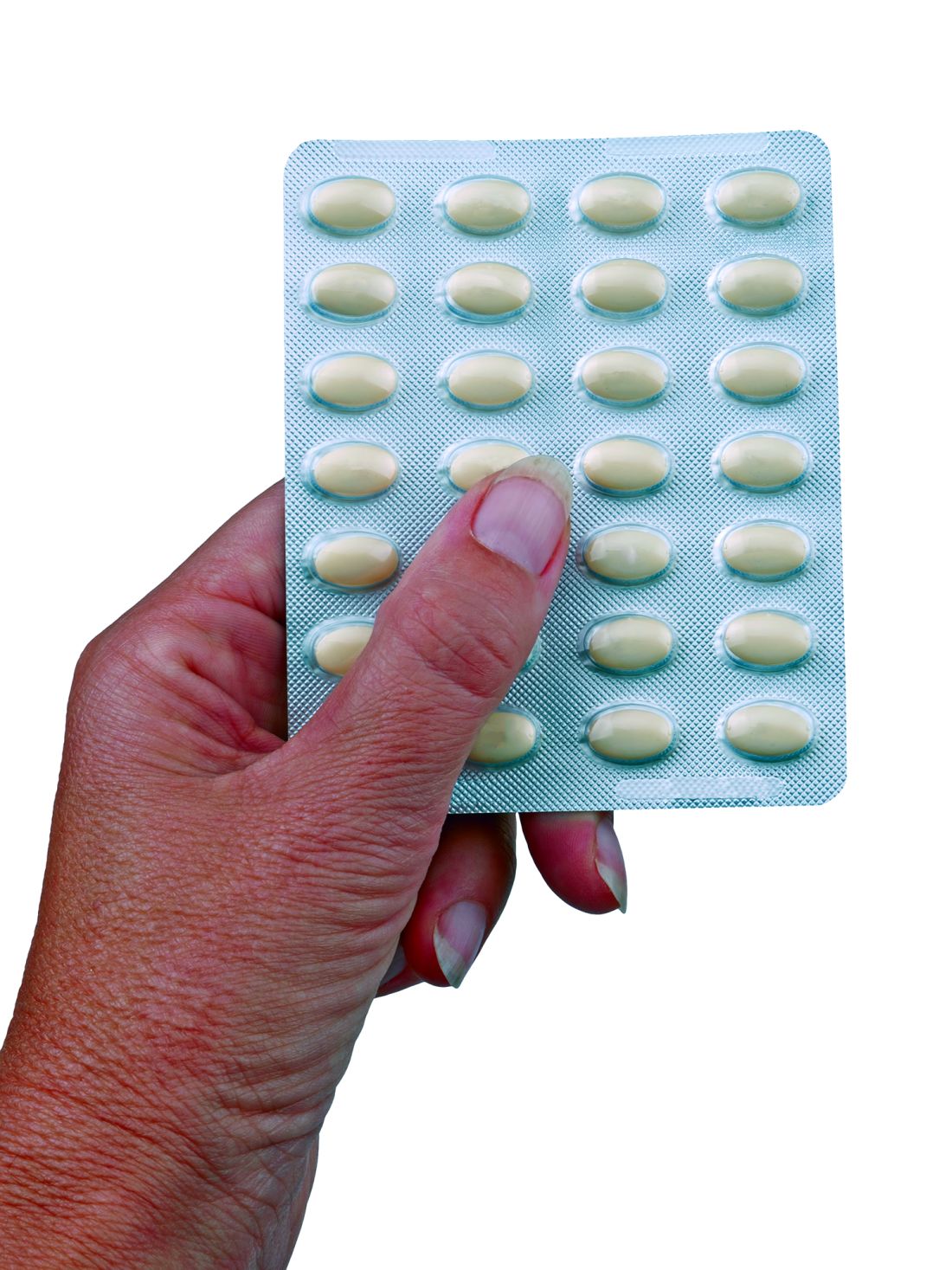User login
Death risks associated with long-term DAPT
A new analysis suggests that patients who receive dual antiplatelet therapy (DAPT) for at least 1 year after coronary stenting are more likely to experience ischemic events than bleeding events, but both types of events are associated with a high risk of death.
Researchers performed a secondary analysis of data from the DAPT study and found that 4% of patients had ischemic events and 2% had bleeding events between 12 and 33 months after stenting.
Both types of events incurred a serious mortality risk—an 18-fold increase after any bleeding event and a 13-fold increase after any ischemic event.
These findings were published in JAMA Cardiology.
“We know from previous trials that continuing dual antiplatelet therapy longer than 12 months after coronary stenting is associated with both decreased ischemia and increased bleeding risk, so these findings reinforce the need to identify individuals who are likely to experience more benefit than harm from continued dual antiplatelet therapy,” said study author Eric Secemsky, MD, of Massachusetts General Hospital in Boston.
For this study, Dr Secemsky and his colleagues analyzed data collected in the DAPT trial, which was designed to determine the benefits and risks of continuing DAPT for more than a year.
The trial enrolled 25,682 patients who were set to receive a drug-eluting or bare-metal stent. After stent placement, they received DAPT—aspirin plus thienopyridine (clopidogrel or prasugrel)—for at least 12 months.
After 12 months of therapy, patients who were treatment-compliant and event-free (no myocardial infarction, stroke, or moderate or severe bleeding) were randomized to continued DAPT or aspirin alone for an additional 18 months. At month 30, patients discontinued randomized treatment but remained on aspirin and were followed for 3 months.
For the present secondary analysis, Dr Secemsky and his colleagues examined data from all 11,648 randomized patients.
Ischemic events
During the study period, 478 patients (4.1%) had 502 ischemic events, including 306 myocardial infarctions, 113 cases of stent thrombosis, and 83 ischemic strokes.
The death rate among patients with ischemic events was 10.9% (n=52), and 78.8% of these deaths (n=41) were attributable to cardiovascular causes. The death rate was 0.7% among patients without a cardiovascular event (82/11,082, P<0.001).
The cumulative incidence of death after ischemic events was 0.5% (0.3% with myocardial infarction, 0.1% with stent thrombosis, and 0.1% with ischemic stroke) among the more than 11,600 randomized patients.
The unadjusted annualized mortality rate after an ischemic event was 27.2 per 100 person-years.
When the researchers controlled for demographic characteristics, comorbid conditions, and procedural factors, having an ischemic event was associated with a 12.6-fold increased risk of death (hazard ratio=14.6 for stent thrombosis, 13.1 for ischemic stroke, and 9.1 for myocardial infarction).
Deaths after ischemic stroke or stent thrombosis usually occurred soon after the event, but the increased risk of death from a myocardial infarction persisted throughout the study period.
Bleeding events
A total of 232 patients (2.0%) had 235 bleeding events—155 moderate and 80 severe bleeds.
The death rate among patients with bleeding events was 17.7% (n=41), compared to 1.6% among patients without a bleed (181/11,416, P<0.001). However, more than half of the deaths occurring after a bleeding event were attributable to cardiovascular causes (53.7%, n=22).
The cumulative incidence of death after a bleeding event was 0.3% (0.1% with moderate and 0.2% with severe bleeding) in the randomized study population.
The unadjusted annualized mortality rate after a bleeding event was 21.5 per 100 person-years.
When the researchers controlled for demographic characteristics, comorbid conditions, and procedural factors, a bleeding event was associated with an 18.1-fold increased risk of death (hazard ratio=36.3 for a severe bleed and 8.0 for a moderate bleed).
Deaths following bleeding events primarily occurred within 30 days of the event.
“Since our analysis found that the development of both ischemic and bleeding events portend a particularly poor overall prognosis, we conclude that we must be thoughtful when prescribing any treatment, such as dual antiplatelet therapy, that may include bleeding risk,” Dr Secemsky said.
“In order to understand the implications of therapies that have potentially conflicting effects—such as decreasing ischemic risk while increasing bleeding risk—we must understand the prognostic factors related to these events. Our efforts now need to be focused on individualizing treatment and identifying those who are at the greatest risk of developing recurrent ischemia and at the lowest risk of developing a bleed.”
In a previous study, Dr Secemsky and his colleagues developed a risk score using DAPT data that can help determine whether or not DAPT should continue past the 1-year mark.
The tool has recently been included in American College of Cardiology(ACC)/American Heart Association guidelines on the duration of DAPT and is available on the ACC website. ![]()
A new analysis suggests that patients who receive dual antiplatelet therapy (DAPT) for at least 1 year after coronary stenting are more likely to experience ischemic events than bleeding events, but both types of events are associated with a high risk of death.
Researchers performed a secondary analysis of data from the DAPT study and found that 4% of patients had ischemic events and 2% had bleeding events between 12 and 33 months after stenting.
Both types of events incurred a serious mortality risk—an 18-fold increase after any bleeding event and a 13-fold increase after any ischemic event.
These findings were published in JAMA Cardiology.
“We know from previous trials that continuing dual antiplatelet therapy longer than 12 months after coronary stenting is associated with both decreased ischemia and increased bleeding risk, so these findings reinforce the need to identify individuals who are likely to experience more benefit than harm from continued dual antiplatelet therapy,” said study author Eric Secemsky, MD, of Massachusetts General Hospital in Boston.
For this study, Dr Secemsky and his colleagues analyzed data collected in the DAPT trial, which was designed to determine the benefits and risks of continuing DAPT for more than a year.
The trial enrolled 25,682 patients who were set to receive a drug-eluting or bare-metal stent. After stent placement, they received DAPT—aspirin plus thienopyridine (clopidogrel or prasugrel)—for at least 12 months.
After 12 months of therapy, patients who were treatment-compliant and event-free (no myocardial infarction, stroke, or moderate or severe bleeding) were randomized to continued DAPT or aspirin alone for an additional 18 months. At month 30, patients discontinued randomized treatment but remained on aspirin and were followed for 3 months.
For the present secondary analysis, Dr Secemsky and his colleagues examined data from all 11,648 randomized patients.
Ischemic events
During the study period, 478 patients (4.1%) had 502 ischemic events, including 306 myocardial infarctions, 113 cases of stent thrombosis, and 83 ischemic strokes.
The death rate among patients with ischemic events was 10.9% (n=52), and 78.8% of these deaths (n=41) were attributable to cardiovascular causes. The death rate was 0.7% among patients without a cardiovascular event (82/11,082, P<0.001).
The cumulative incidence of death after ischemic events was 0.5% (0.3% with myocardial infarction, 0.1% with stent thrombosis, and 0.1% with ischemic stroke) among the more than 11,600 randomized patients.
The unadjusted annualized mortality rate after an ischemic event was 27.2 per 100 person-years.
When the researchers controlled for demographic characteristics, comorbid conditions, and procedural factors, having an ischemic event was associated with a 12.6-fold increased risk of death (hazard ratio=14.6 for stent thrombosis, 13.1 for ischemic stroke, and 9.1 for myocardial infarction).
Deaths after ischemic stroke or stent thrombosis usually occurred soon after the event, but the increased risk of death from a myocardial infarction persisted throughout the study period.
Bleeding events
A total of 232 patients (2.0%) had 235 bleeding events—155 moderate and 80 severe bleeds.
The death rate among patients with bleeding events was 17.7% (n=41), compared to 1.6% among patients without a bleed (181/11,416, P<0.001). However, more than half of the deaths occurring after a bleeding event were attributable to cardiovascular causes (53.7%, n=22).
The cumulative incidence of death after a bleeding event was 0.3% (0.1% with moderate and 0.2% with severe bleeding) in the randomized study population.
The unadjusted annualized mortality rate after a bleeding event was 21.5 per 100 person-years.
When the researchers controlled for demographic characteristics, comorbid conditions, and procedural factors, a bleeding event was associated with an 18.1-fold increased risk of death (hazard ratio=36.3 for a severe bleed and 8.0 for a moderate bleed).
Deaths following bleeding events primarily occurred within 30 days of the event.
“Since our analysis found that the development of both ischemic and bleeding events portend a particularly poor overall prognosis, we conclude that we must be thoughtful when prescribing any treatment, such as dual antiplatelet therapy, that may include bleeding risk,” Dr Secemsky said.
“In order to understand the implications of therapies that have potentially conflicting effects—such as decreasing ischemic risk while increasing bleeding risk—we must understand the prognostic factors related to these events. Our efforts now need to be focused on individualizing treatment and identifying those who are at the greatest risk of developing recurrent ischemia and at the lowest risk of developing a bleed.”
In a previous study, Dr Secemsky and his colleagues developed a risk score using DAPT data that can help determine whether or not DAPT should continue past the 1-year mark.
The tool has recently been included in American College of Cardiology(ACC)/American Heart Association guidelines on the duration of DAPT and is available on the ACC website. ![]()
A new analysis suggests that patients who receive dual antiplatelet therapy (DAPT) for at least 1 year after coronary stenting are more likely to experience ischemic events than bleeding events, but both types of events are associated with a high risk of death.
Researchers performed a secondary analysis of data from the DAPT study and found that 4% of patients had ischemic events and 2% had bleeding events between 12 and 33 months after stenting.
Both types of events incurred a serious mortality risk—an 18-fold increase after any bleeding event and a 13-fold increase after any ischemic event.
These findings were published in JAMA Cardiology.
“We know from previous trials that continuing dual antiplatelet therapy longer than 12 months after coronary stenting is associated with both decreased ischemia and increased bleeding risk, so these findings reinforce the need to identify individuals who are likely to experience more benefit than harm from continued dual antiplatelet therapy,” said study author Eric Secemsky, MD, of Massachusetts General Hospital in Boston.
For this study, Dr Secemsky and his colleagues analyzed data collected in the DAPT trial, which was designed to determine the benefits and risks of continuing DAPT for more than a year.
The trial enrolled 25,682 patients who were set to receive a drug-eluting or bare-metal stent. After stent placement, they received DAPT—aspirin plus thienopyridine (clopidogrel or prasugrel)—for at least 12 months.
After 12 months of therapy, patients who were treatment-compliant and event-free (no myocardial infarction, stroke, or moderate or severe bleeding) were randomized to continued DAPT or aspirin alone for an additional 18 months. At month 30, patients discontinued randomized treatment but remained on aspirin and were followed for 3 months.
For the present secondary analysis, Dr Secemsky and his colleagues examined data from all 11,648 randomized patients.
Ischemic events
During the study period, 478 patients (4.1%) had 502 ischemic events, including 306 myocardial infarctions, 113 cases of stent thrombosis, and 83 ischemic strokes.
The death rate among patients with ischemic events was 10.9% (n=52), and 78.8% of these deaths (n=41) were attributable to cardiovascular causes. The death rate was 0.7% among patients without a cardiovascular event (82/11,082, P<0.001).
The cumulative incidence of death after ischemic events was 0.5% (0.3% with myocardial infarction, 0.1% with stent thrombosis, and 0.1% with ischemic stroke) among the more than 11,600 randomized patients.
The unadjusted annualized mortality rate after an ischemic event was 27.2 per 100 person-years.
When the researchers controlled for demographic characteristics, comorbid conditions, and procedural factors, having an ischemic event was associated with a 12.6-fold increased risk of death (hazard ratio=14.6 for stent thrombosis, 13.1 for ischemic stroke, and 9.1 for myocardial infarction).
Deaths after ischemic stroke or stent thrombosis usually occurred soon after the event, but the increased risk of death from a myocardial infarction persisted throughout the study period.
Bleeding events
A total of 232 patients (2.0%) had 235 bleeding events—155 moderate and 80 severe bleeds.
The death rate among patients with bleeding events was 17.7% (n=41), compared to 1.6% among patients without a bleed (181/11,416, P<0.001). However, more than half of the deaths occurring after a bleeding event were attributable to cardiovascular causes (53.7%, n=22).
The cumulative incidence of death after a bleeding event was 0.3% (0.1% with moderate and 0.2% with severe bleeding) in the randomized study population.
The unadjusted annualized mortality rate after a bleeding event was 21.5 per 100 person-years.
When the researchers controlled for demographic characteristics, comorbid conditions, and procedural factors, a bleeding event was associated with an 18.1-fold increased risk of death (hazard ratio=36.3 for a severe bleed and 8.0 for a moderate bleed).
Deaths following bleeding events primarily occurred within 30 days of the event.
“Since our analysis found that the development of both ischemic and bleeding events portend a particularly poor overall prognosis, we conclude that we must be thoughtful when prescribing any treatment, such as dual antiplatelet therapy, that may include bleeding risk,” Dr Secemsky said.
“In order to understand the implications of therapies that have potentially conflicting effects—such as decreasing ischemic risk while increasing bleeding risk—we must understand the prognostic factors related to these events. Our efforts now need to be focused on individualizing treatment and identifying those who are at the greatest risk of developing recurrent ischemia and at the lowest risk of developing a bleed.”
In a previous study, Dr Secemsky and his colleagues developed a risk score using DAPT data that can help determine whether or not DAPT should continue past the 1-year mark.
The tool has recently been included in American College of Cardiology(ACC)/American Heart Association guidelines on the duration of DAPT and is available on the ACC website. ![]()
Hospitals rarely offer cessation therapy to smokers with MI
according to a poster presented at the annual meeting of the American College of Cardiology.
“Inpatient smoking cessation therapy coupled with outpatient follow-up can significantly improve long-term smoking cessation rates, but little is known about how often smoking cessation therapies are used among hospitalized patients,” wrote Dr Quinn R. Pack and coauthors from the Baystate Medical Center in Springfield, and Massachusetts General Hospital.
The nicotine patch was the most common therapy; 20.4% of patients received it with an average daily dose of 19.8 mg, while 2.2% of patients received bupropion, 0.4% received varenicline, 0.3% received nicotine gum, 0.2% received nicotine inhaler therapy, and just 0.04% received nicotine lozenge therapy. Nearly one in ten patients received professional counseling (9.6%).
Smoking cessation was more commonly given to patients with lung disease, depression, alcohol use or who were younger but the researchers noted significant variations in the use of smoking cessation therapies across hospitals. While the median treatment rate was 26.2%, it ranged from as low as 11.4% to a high of 51.1%.
Given the variation across hospitals, the authors said they plan to identify the strategies and practices that the high-performing hospitals use to provide smoking cessation therapies.
“Smoking cessation is the single most effective behavior change that patients can make after a hospitalization for coronary heart disease to prevent recurrent events,” the authors wrote. “Given that hospitalization is usually a teachable moment with high patient motivation to quit smoking, there appears to be a large opportunity for improvement in the care of smokers hospitalized with CHD.”
The authors noted that their data were limited to smoking cessation options provided during hospitalization; the researchers said they did not assess whether those therapies helped MI patients quit smoking, or whether there were patients who declined the therapies offered.
No conflict of interest disclosures were provided with the data.
according to a poster presented at the annual meeting of the American College of Cardiology.
“Inpatient smoking cessation therapy coupled with outpatient follow-up can significantly improve long-term smoking cessation rates, but little is known about how often smoking cessation therapies are used among hospitalized patients,” wrote Dr Quinn R. Pack and coauthors from the Baystate Medical Center in Springfield, and Massachusetts General Hospital.
The nicotine patch was the most common therapy; 20.4% of patients received it with an average daily dose of 19.8 mg, while 2.2% of patients received bupropion, 0.4% received varenicline, 0.3% received nicotine gum, 0.2% received nicotine inhaler therapy, and just 0.04% received nicotine lozenge therapy. Nearly one in ten patients received professional counseling (9.6%).
Smoking cessation was more commonly given to patients with lung disease, depression, alcohol use or who were younger but the researchers noted significant variations in the use of smoking cessation therapies across hospitals. While the median treatment rate was 26.2%, it ranged from as low as 11.4% to a high of 51.1%.
Given the variation across hospitals, the authors said they plan to identify the strategies and practices that the high-performing hospitals use to provide smoking cessation therapies.
“Smoking cessation is the single most effective behavior change that patients can make after a hospitalization for coronary heart disease to prevent recurrent events,” the authors wrote. “Given that hospitalization is usually a teachable moment with high patient motivation to quit smoking, there appears to be a large opportunity for improvement in the care of smokers hospitalized with CHD.”
The authors noted that their data were limited to smoking cessation options provided during hospitalization; the researchers said they did not assess whether those therapies helped MI patients quit smoking, or whether there were patients who declined the therapies offered.
No conflict of interest disclosures were provided with the data.
according to a poster presented at the annual meeting of the American College of Cardiology.
“Inpatient smoking cessation therapy coupled with outpatient follow-up can significantly improve long-term smoking cessation rates, but little is known about how often smoking cessation therapies are used among hospitalized patients,” wrote Dr Quinn R. Pack and coauthors from the Baystate Medical Center in Springfield, and Massachusetts General Hospital.
The nicotine patch was the most common therapy; 20.4% of patients received it with an average daily dose of 19.8 mg, while 2.2% of patients received bupropion, 0.4% received varenicline, 0.3% received nicotine gum, 0.2% received nicotine inhaler therapy, and just 0.04% received nicotine lozenge therapy. Nearly one in ten patients received professional counseling (9.6%).
Smoking cessation was more commonly given to patients with lung disease, depression, alcohol use or who were younger but the researchers noted significant variations in the use of smoking cessation therapies across hospitals. While the median treatment rate was 26.2%, it ranged from as low as 11.4% to a high of 51.1%.
Given the variation across hospitals, the authors said they plan to identify the strategies and practices that the high-performing hospitals use to provide smoking cessation therapies.
“Smoking cessation is the single most effective behavior change that patients can make after a hospitalization for coronary heart disease to prevent recurrent events,” the authors wrote. “Given that hospitalization is usually a teachable moment with high patient motivation to quit smoking, there appears to be a large opportunity for improvement in the care of smokers hospitalized with CHD.”
The authors noted that their data were limited to smoking cessation options provided during hospitalization; the researchers said they did not assess whether those therapies helped MI patients quit smoking, or whether there were patients who declined the therapies offered.
No conflict of interest disclosures were provided with the data.
FROM ACC 17
Key clinical point: Less than one-third of smokers hospitalized for myocardial infarction receive any kind of smoking cessation therapy during their stay in hospital.
Major finding: Only 29.9% of current smokers hospitalized for MI were given at least one kind of smoking cessation therapy while in hospital.
Data source: Cohort study of billing and ICD-9 data from 36,675 current smokers hospitalized for myocardial infarction.
Disclosures: No disclosures were available.
HT use associated with lower postmenopausal coronary artery calcium scores
, and may also be linked to lower all-cause mortality, according to data presented in a poster at the annual meeting of the American College of Cardiology.
In a retrospective cohort study involving 4,286 consecutive asymptomatic postmenopausal women undergoing coronary artery calcium scanning between 1998 and 2012, researchers sought to clarify the controversial cardioprotective effects of hormone replacement therapy (HT).
After adjustment for age and cardiac risk factors, HT was associated with a higher prevalence of women with calcium artery score of 0, and a lower prevalence of women with calcium artery scores above 399.
Women taking HT also had significantly lower mortality compared with those not on HT (5.8% vs. 6.8%). After adjustment for age, cardiac risk factors, and coronary artery calcium scores, women on HT had a 30% lower long-term mortality (95% confidence interval, 0.49-0.98; P = .043).
“Hormone replacement therapy resulted in lower atherosclerosis and improved survival for all age groups and for all levels of coronary calcium,” Dr. Arnson said in a statement. “From this we do think it is beneficial, but we would need prospective or randomized studies to determine which groups might not benefit or even be harmed by this therapy.”
The women in the HT group were significantly younger than those not taking HT, and had a lower prevalence of hypertension and diabetes as well as higher average HDL cholesterol than women not taking HT.
Researchers saw a clear decrease in the number of women taking HT over the course of the study, declining from a peak of 60% in 1998 to 23% of women in 2012.
No disclosures were available.
, and may also be linked to lower all-cause mortality, according to data presented in a poster at the annual meeting of the American College of Cardiology.
In a retrospective cohort study involving 4,286 consecutive asymptomatic postmenopausal women undergoing coronary artery calcium scanning between 1998 and 2012, researchers sought to clarify the controversial cardioprotective effects of hormone replacement therapy (HT).
After adjustment for age and cardiac risk factors, HT was associated with a higher prevalence of women with calcium artery score of 0, and a lower prevalence of women with calcium artery scores above 399.
Women taking HT also had significantly lower mortality compared with those not on HT (5.8% vs. 6.8%). After adjustment for age, cardiac risk factors, and coronary artery calcium scores, women on HT had a 30% lower long-term mortality (95% confidence interval, 0.49-0.98; P = .043).
“Hormone replacement therapy resulted in lower atherosclerosis and improved survival for all age groups and for all levels of coronary calcium,” Dr. Arnson said in a statement. “From this we do think it is beneficial, but we would need prospective or randomized studies to determine which groups might not benefit or even be harmed by this therapy.”
The women in the HT group were significantly younger than those not taking HT, and had a lower prevalence of hypertension and diabetes as well as higher average HDL cholesterol than women not taking HT.
Researchers saw a clear decrease in the number of women taking HT over the course of the study, declining from a peak of 60% in 1998 to 23% of women in 2012.
No disclosures were available.
, and may also be linked to lower all-cause mortality, according to data presented in a poster at the annual meeting of the American College of Cardiology.
In a retrospective cohort study involving 4,286 consecutive asymptomatic postmenopausal women undergoing coronary artery calcium scanning between 1998 and 2012, researchers sought to clarify the controversial cardioprotective effects of hormone replacement therapy (HT).
After adjustment for age and cardiac risk factors, HT was associated with a higher prevalence of women with calcium artery score of 0, and a lower prevalence of women with calcium artery scores above 399.
Women taking HT also had significantly lower mortality compared with those not on HT (5.8% vs. 6.8%). After adjustment for age, cardiac risk factors, and coronary artery calcium scores, women on HT had a 30% lower long-term mortality (95% confidence interval, 0.49-0.98; P = .043).
“Hormone replacement therapy resulted in lower atherosclerosis and improved survival for all age groups and for all levels of coronary calcium,” Dr. Arnson said in a statement. “From this we do think it is beneficial, but we would need prospective or randomized studies to determine which groups might not benefit or even be harmed by this therapy.”
The women in the HT group were significantly younger than those not taking HT, and had a lower prevalence of hypertension and diabetes as well as higher average HDL cholesterol than women not taking HT.
Researchers saw a clear decrease in the number of women taking HT over the course of the study, declining from a peak of 60% in 1998 to 23% of women in 2012.
No disclosures were available.
FROM ACC 17
Key clinical point: Hormone replacement therapy is associated with lower coronary artery calcium scores in postmenopausal women and may also be linked to lower all-cause mortality.
Major finding: The average coronary artery calcium score was significantly lower in the 41% of women who were taking HT compared to those who weren’t (72.1 vs. 3,119.2 ).
Data source: Retrospective cohort study of 4,286 postmenopausal women undergoing coronary artery calcium scanning.
Disclosures: No disclosures were available.
Cannabis associated with increased risk of heart failure and stroke
Cannabis use was associated with an increased risk of cerebrovascular accidents and heart failure in a retrospective analysis of the Nationwide Inpatient Sample (NIS).
Aditi Kalla, MD, a cardiology fellow at Einstein Medical Center in Philadelphia, and her colleagues analyzed data from nearly 21 million adult patients aged 18-55 years from the NIS 2009-2010 database. Approximately 1.5% (316,397) were diagnosed as cannabis users.
Cannabis users also were more likely to report cardiac risk factors such as hypertension (19.9% vs. 15.7% of nonusers), tobacco use (47.2% vs. 11.4%), alcohol use (28.1% vs 3.8%), and obesity (7% vs. 6.5%). They were older, on average, with a mean age of 33 years, compared with 26 years, and were likely to be male (60%), Dr. Kalla noted during a press briefing held in advance of the annual meeting of the American College of Cardiology.
Using multivariate regression analysis to adjust for these traditional cardiovascular risk factors, the investigators found cannabis remained an independent predictor for heart failure, with an odds ratio of 1.1 (P less than .01) and cerebrovascular accident, with an OR of 1.24 (P less than .001).
“Even when we corrected for known risks, we still found a higher rate of both stroke and heart failure in these patients,” Dr. Kalla said. “That leads us to believe that there is something else going on besides just obesity or diet-related cardiovascular side effects.”
Dr. Kalla noted that an expert analysis published by the ACC in September 2016 linked cannabinoid receptor type 1 with atherogenesis.
Further research is needed on the topic of cannabis and cardiovascular effects, especially as the legalization of medical and recreational cannabis spreads across the country, Dr. Kalla said. “Decriminalization of cannabis has passed in several states, bringing the total count now up to 28 states, plus the District of Columbia. We now need to be more knowledgeable of the risks and benefits of cannabis, as patients in these states may inquire into the use of it, or even ask us for prescriptions for it.”
While the NIS provided a large and strong data set for this analysis, the number of cannabis users likely was underreported because cannabis was legal in just 14 states at the time, Dr. Kalla noted. The study also was limited by a lack of specific information regarding cannabis intake, method of intake (ingestion or smoking), quantity and frequency of use, and whether use was medical or recreational.
The information collected also excluded whether patients used marijuana for medical or recreational purpose and how it was taken, by smoking or ingestion.
[email protected]
On Twitter @EAZTweets
Cannabis use was associated with an increased risk of cerebrovascular accidents and heart failure in a retrospective analysis of the Nationwide Inpatient Sample (NIS).
Aditi Kalla, MD, a cardiology fellow at Einstein Medical Center in Philadelphia, and her colleagues analyzed data from nearly 21 million adult patients aged 18-55 years from the NIS 2009-2010 database. Approximately 1.5% (316,397) were diagnosed as cannabis users.
Cannabis users also were more likely to report cardiac risk factors such as hypertension (19.9% vs. 15.7% of nonusers), tobacco use (47.2% vs. 11.4%), alcohol use (28.1% vs 3.8%), and obesity (7% vs. 6.5%). They were older, on average, with a mean age of 33 years, compared with 26 years, and were likely to be male (60%), Dr. Kalla noted during a press briefing held in advance of the annual meeting of the American College of Cardiology.
Using multivariate regression analysis to adjust for these traditional cardiovascular risk factors, the investigators found cannabis remained an independent predictor for heart failure, with an odds ratio of 1.1 (P less than .01) and cerebrovascular accident, with an OR of 1.24 (P less than .001).
“Even when we corrected for known risks, we still found a higher rate of both stroke and heart failure in these patients,” Dr. Kalla said. “That leads us to believe that there is something else going on besides just obesity or diet-related cardiovascular side effects.”
Dr. Kalla noted that an expert analysis published by the ACC in September 2016 linked cannabinoid receptor type 1 with atherogenesis.
Further research is needed on the topic of cannabis and cardiovascular effects, especially as the legalization of medical and recreational cannabis spreads across the country, Dr. Kalla said. “Decriminalization of cannabis has passed in several states, bringing the total count now up to 28 states, plus the District of Columbia. We now need to be more knowledgeable of the risks and benefits of cannabis, as patients in these states may inquire into the use of it, or even ask us for prescriptions for it.”
While the NIS provided a large and strong data set for this analysis, the number of cannabis users likely was underreported because cannabis was legal in just 14 states at the time, Dr. Kalla noted. The study also was limited by a lack of specific information regarding cannabis intake, method of intake (ingestion or smoking), quantity and frequency of use, and whether use was medical or recreational.
The information collected also excluded whether patients used marijuana for medical or recreational purpose and how it was taken, by smoking or ingestion.
[email protected]
On Twitter @EAZTweets
Cannabis use was associated with an increased risk of cerebrovascular accidents and heart failure in a retrospective analysis of the Nationwide Inpatient Sample (NIS).
Aditi Kalla, MD, a cardiology fellow at Einstein Medical Center in Philadelphia, and her colleagues analyzed data from nearly 21 million adult patients aged 18-55 years from the NIS 2009-2010 database. Approximately 1.5% (316,397) were diagnosed as cannabis users.
Cannabis users also were more likely to report cardiac risk factors such as hypertension (19.9% vs. 15.7% of nonusers), tobacco use (47.2% vs. 11.4%), alcohol use (28.1% vs 3.8%), and obesity (7% vs. 6.5%). They were older, on average, with a mean age of 33 years, compared with 26 years, and were likely to be male (60%), Dr. Kalla noted during a press briefing held in advance of the annual meeting of the American College of Cardiology.
Using multivariate regression analysis to adjust for these traditional cardiovascular risk factors, the investigators found cannabis remained an independent predictor for heart failure, with an odds ratio of 1.1 (P less than .01) and cerebrovascular accident, with an OR of 1.24 (P less than .001).
“Even when we corrected for known risks, we still found a higher rate of both stroke and heart failure in these patients,” Dr. Kalla said. “That leads us to believe that there is something else going on besides just obesity or diet-related cardiovascular side effects.”
Dr. Kalla noted that an expert analysis published by the ACC in September 2016 linked cannabinoid receptor type 1 with atherogenesis.
Further research is needed on the topic of cannabis and cardiovascular effects, especially as the legalization of medical and recreational cannabis spreads across the country, Dr. Kalla said. “Decriminalization of cannabis has passed in several states, bringing the total count now up to 28 states, plus the District of Columbia. We now need to be more knowledgeable of the risks and benefits of cannabis, as patients in these states may inquire into the use of it, or even ask us for prescriptions for it.”
While the NIS provided a large and strong data set for this analysis, the number of cannabis users likely was underreported because cannabis was legal in just 14 states at the time, Dr. Kalla noted. The study also was limited by a lack of specific information regarding cannabis intake, method of intake (ingestion or smoking), quantity and frequency of use, and whether use was medical or recreational.
The information collected also excluded whether patients used marijuana for medical or recreational purpose and how it was taken, by smoking or ingestion.
[email protected]
On Twitter @EAZTweets
FROM ACC 17
Key clinical point:
Major finding: Cannabis users showed 26% increased risk (OR, 1.24) of stroke and 10% increased risk (OR, 1.1) of heart failure.
Data source: Retrospective study of over 20 million patients’ records aged 18-55 years gathered from the Nationwide Inpatient Sample 2009-2010 database.
Disclosures: Researchers reported no relevant conflicts of interest.







